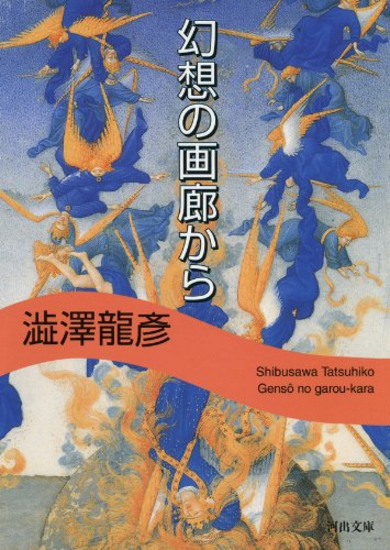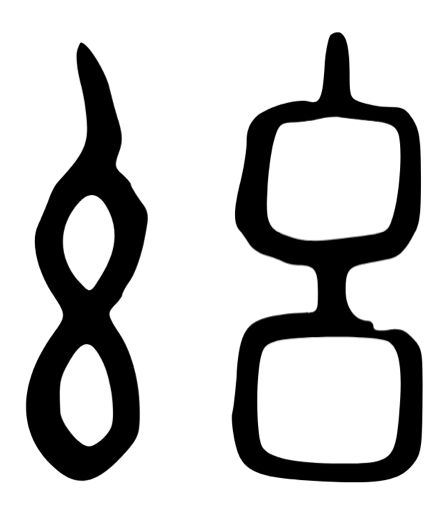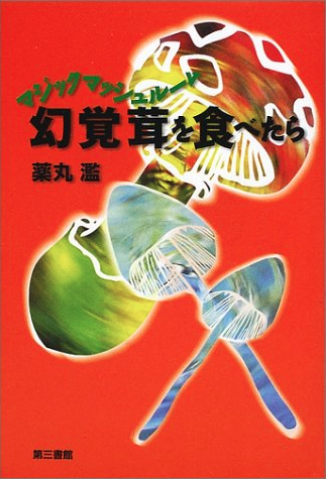52. The "Short Thread" Radical: Í¿¤
If you were to read the word Í¿¤ as ÐÀÐÐУÐ, it would mean "small." With the yomi ÐÐЈУÐ, this term instead means "young." This non-Joyo character also carries the on-yomi дÐÎ, in which case the Í¿¤ kanji could mean either of those things.
What's the Japanese Name of the Í¿¤ Radical?
The дÐÎ reading matters because it has worked its way into the Japanese name of the "short thread" radical Í¿¤ when it appears on the left side of a kanji:
Í¿¥ (985: childhood)
Í¿£ (1226: phantom; illusion; fantasy)
In such cases, we could call the radical ÐÐСÐ. Corresponding to Í¿¤Óñ´, that word literally means "'young' on the left side of a kanji," says Nelson. Unfortunately, he's alone in providing that term; no other sources mention ÐÐСРas the radical name.
Instead, dictionaries such as Kanjigen indicate that no matter where the Í¿¤ radical appears in a kanji, we should call it ÐдÐÐÐ (Ó°¡Õ Ù). This does not mean "'thread' radical at the 'head' of a kanji," as one might think (based on other radical names). Instead, Ó°¡Õ Ù means "head (upper part) of Ó°¡," which is to say Í¿¤. One pronounces Ó°¡ (thread) as Ðд, which explains the first part of ÐдÐÐÐ.
Only four Joyo kanji feature Í¿¤ as the on-duty radical. Here are the other two:
Í¿ƒ (1129: how many; some; several; no matter how much)
Í¿§ (1865: faint; secluded; hidden deeply; world of the dead)
Note that in these latter two characters, Í¿¤ is duplicated.

We find Í¿£ (1226: phantom; illusion; fantasy) inside this word:
Í¿£Ì° (ÐÐÐÐ: fantasy; illusion; vision; dream)
fantasy + thought, idea
That term heads off this book title:
ÐÍ¿£Ì°ÐÛӣͣÐÐÐ
From the Art Gallery of Illusions
ӣͣ (ÐÐÐ: art gallery)
The essays explore fantastical art with a focus on demonology, alchemy, and eroticism.
Differentiating the "Short Thread" and "Thread" Radicals
The Í¿¤ radical looks like another that we've already encountered:
Ó°¡ (radical 120: thread)
Nelson mentions that people have nicknamed Ó°¡ the "long thread" radical to distinguish it from the "short thread" radical. So the English terms for Ó°¡ and Í¿¤—"thread" or "long thread" versus "short thread"—draw a clear line between the two radicals.
By contrast, the names ÐдÐÐÐ and Ðд/ÐдСРcreate no distinction regarding the thread length.
Here are some distinctions to note:
• Whereas Í¿¤ has three strokes, Ó°¡ has six.
• The Japanese rarely use Í¿¤ as a character but frequently use the kanji Ó°¡ (27: thread). (By contrast, the Chinese frequently use Í¿¤ to mean "one.")
These two characters looked more dissimilar in their early years:




These images are courtesy of Richard Sears.
To the left we have three images of Ó°¡, first in seal script, then twice as a bronze character. The shape originally depicted a "skein of yarn," says Henshall, who has supplied all etymological information in this Radical Note.
The other two pictures are of Í¿¤ in bronze script and seal script respectively. Henshall says that the Í¿¤ character means "small" and that the Í¿¤ radical is a short version of Ó°¡ (thread). He makes that general observation in the etymology of ̓ (111: after), in which Í¿¤ is just a component.
The two radicals do have one thing in common, in that neither has a variant shape. That is, when they move to the left side of a kanji, these radicals don't become skinnier.
Photo Credit: Eve Kushner
The word Í¿¥Ó´Í (ÐÐÐÀÐÐ) means "kindergarten," though here it conveys "preschool." This school is close to where I live in California—hence the English!
The Í¿¤ radical in Í¿¥ (985: childhood) means "tiny, little, limited," according to Henshall. In Í¿¥, that radical combines with Í (strength). "Little strength" refers to a "young child" or "infant."
Incidentally, dictionaries such as Kanjigen indicate that the Í¿¤ in Í¿¥ is not only the radical but also the phonetic!
Differentiating the "Short Thread" and "Blackness" Radicals
It's possible to confuse Í¿¤ with one other radical:
Ó (radical 95: blackness)
You may recognize this shape as the autonomous kanji Ó (1227: mysterious; occultness; blackness; profound).
Aside from that character, the Ó radical is on duty in just one Joyo kanji:
Ó (803: rate; ratio; to lead; straightforward; sudden)
I mention Ó because Henshall indicates that the central Ó shape doesn't matter here. Instead the Í¿¤ is important, contributing the meaning "short thread." When you consider it along with the four dots sandwiching Í¿¤, you have "bits of thread." The ð¤ and Í came later, representing "two devices used to twist threads into rope." The meanings evolved from there until Ó obtained its contemporary definitions. The point for our purposes is that with this character, we see some overlap between Í¿¤ and Ó; in Ó, Í¿¤ powers the overall meaning but masquerades as the Ó radical.
We've seen that Ó°¡ originally depicted a "skein of yarn" and that Í¿¤ is a short version of Ó°¡ (thread). In Ó, says Henshall, the Í¿¤ again means “short thread.” Meanwhile, the top of Ó represents a device for twisting bits of thread into rope. (That sounds familiar.) Originally, he says, Ó meant “short thread suitable for twisting.” It later came to mean “something very small” and, by association, “something hard to see.” That led to “obscure,” both in the physical sense of “dark” or “black” and in the figurative sense of “mysterious, occult.”

The author tried Í¿£ÒÎÐÙÐа (ÐÐÐÐÐÙÐа: hallucinogenic mushrooms, magic mushrooms) the night before they were made illegal in Japan, and this book is about his supposedly tragicomic experience.
Although the Japanese usually write "mushroom" as ÐÙÐа, the corresponding non-Joyo kanji Ò¡ works, too, as this title reflects:
ÐÍ¿£ÒÎÒ¡ÐÕÈпÐÐÐ
When I Ate Magic Mushrooms
ÕÈпР(ÐпÐ: to eat)
Doubled Radicals
I noted that our on-duty Í¿¤ radical is doubled in two characters. Here's what Henshall has to say about those duplicated shapes:
Í¿ƒ (1129: how many; some; several; no matter how much)
The doubling indicates "many." The remaining strokes collectively mean "trim" or "put into shape" and phonetically express "control." The whole character symbolizes "that which controls threads and puts them into shape," which is to say "loom." Because "controlling threads on a loom" came to represent "predictable movement," this character evolved to mean "predictable quantity" and therefore "how many" or "how much."
Í¿§ (1865: faint; secluded; hidden deeply; world of the dead)
The doubled radical acts phonetically to express "black" and may also convey "obscure." Originally, this character referred to "something blackened by flame" and thus of "unclear appearance," so it came to mean "obscure" and "dark," with "faint" as an associated meaning.
In explaining Í¿§, Henshall refers us to his etymology of Ó and later says that like Ó, the Í¿§ kanji can have connotations of "mysteriousness/otherworldliness." He never explicitly asserts that Ó has influenced Í¿§, but his two comments make it clear that that radical has closer ties to Í¿§ than Í¿¤ does. He also says nothing more than what I've mentioned about why Í¿¤ appears in Í¿ƒ. However, we can see from these two etymologies that our "short thread" radical doesn't mean "short thread" in either kanji.
That was also true of the kanji in which Í¿¤ appears on the side. Here's what we learned about one of those characters:
Í¿¥ (985: childhood)
The radical means "tiny, little, limited," so thread has nothing to do with the story.
As for Í¿£ (1226: phantom; illusion; fantasy), Henshall says in his newer edition that the character likely depicts an inverted "weaving shuttle" and may have no direct connection to thread unless, as one scholar believes, the shape symbolizes "ends of fine/short thread (Í¿¤) move indistinctly and are hard to see.
The only thready thing about the Í¿¤ radical is that it resembles Ó°¡ (thread). Calling Í¿¤ the "short thread" radical is therefore a matter of convenience—and possible confusion!
As we saw, though, Í¿¤ does mean "short thread" in Ó and in Ó (803: rate; ratio; to lead; straightforward; sudden). In both cases, Ó is the on-duty radical. Go figure!
